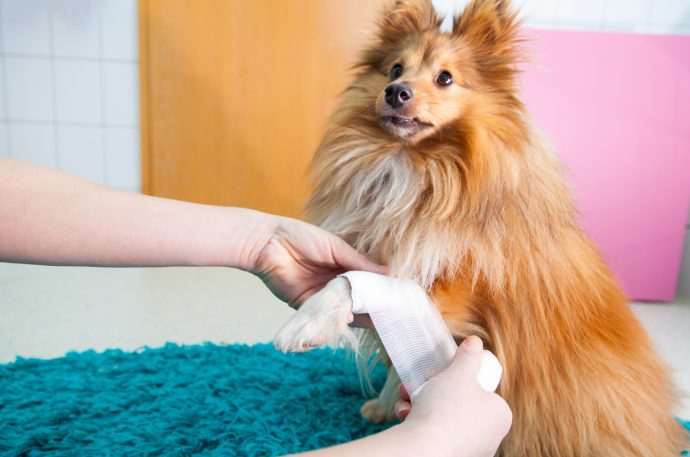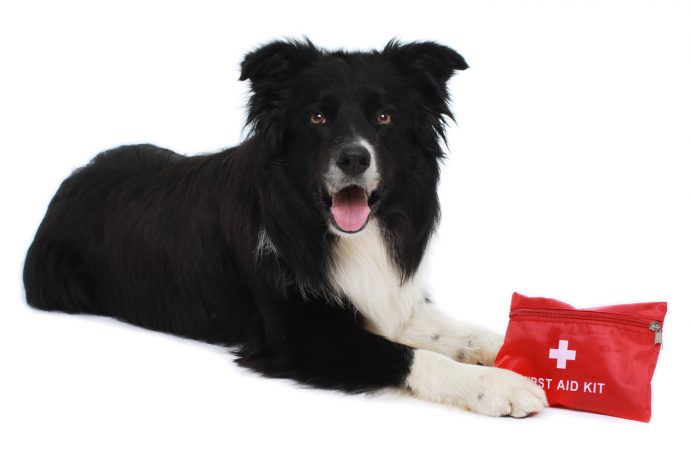Knowing what to do if your pet is hurt or unwell is something that every pet owner should know. So, with this in mind PetsPyjamas went on a pet first aid training course. Here we share the top 10 first aid tips that can save your pet…

1. Reduce the risk
Avoid incidents by reducing risks – safety check your pet’s surroundings like you would a child.
2. Stay calm
If there is an incident, think first, then act, jumping into a situation anxious and unprepared may stress the animal further. Talking in a soothing voice, avoiding confrontational body language and direct eye contact is more effective than you think. Also try approaching the pet from the side, facing sideways.
3. Broken bones
Avoid further injury by preventing the animal from running off. If a break is suspected everyday objects can be used to splint the injury, like toilet roll tubes, bubble wrap and tape to secure it. If you are out driving, a boot cover may provide a secure makeshift stretcher.
4. Poisoning
If you suspect the pet has ingested poison, do not attempt mouth to snout resuscitation as you may become contaminated yourself.
5. Vomiting
If your pet has been sick take a sample with you to the vet, it may help them identify any poisons and treat the pet more effectively. This also applies to faeces.

6. Burn wounds
If your pet has burns, it is important to cool the area with water for at least 10 minutes, and do not apply bandages that may get stuck to the wound. If you need to use a crate to transport your pet to the vets do not use bedding, instead make sure you have a clean plastic surface. With human burns cling film is recommended to minimize infection; however your pet is unlikely to tolerate this
7. Bleeding claws
If you have accidentally clipped a pet’s claw too far up and it begins to bleed, place an absorbent dressing over the paw and bandage securely but not too tight as far up the leg as possible to prevent it sliding down. If the bleeding does not stop within a reasonable amount of time seek veterinary assistance.
8. Bleeding ears
Bleeding ears can be a nuisance, particularly if the pet has upwards pointing ears, it may help to secure the ear downwards with a bandage until you can seek help.
9. CPR for pets
If CPR is needed, placing the pet on its right side will be more effective, as their heart is slightly to the left. Tilting their head slightly upwards (but not overextended) will help prevent their tongue blocking their airway. Begin with five breaths – for small animals you may be able to cover their snout with your mouth, with larger animals hold the tongue outside of the mouth and breath into its nose. After the initial five breaths, switch from 15 compressions to two breaths. Make sure you do not breathe in too much air, just enough to see their chest rise, and allow the compression to rise fully before beginning another.
10. Choking or struggling to breathe
If an animal is choking, leave them to it, if they are able to cough then they are still able to breathe, animals are very effective at clearing their airways and you should only intervene if the animal stops choking and becomes limp or unconscious.


